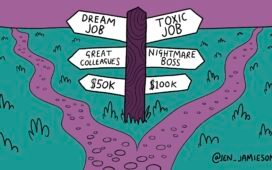
Everything About Recruitment And Onboarding
Whether you’re an HR pro, a business owner, or just getting started in the talent game, you want to gather as much information as you can about recruitment and onboarding. Knowing the ins and outs of these processes is key to building a solid team and creating a great work environment. So, what do these terms mean and why are they so important?
Recruiting involves more than just spotting candidates with the appropriate skills; it also involves finding individuals who align with your company’s culture and values. From creating job descriptions and posting them on various platforms to conducting interviews and discussing numbers, recruitment is the first thing candidates experience in your company. Now, onboarding is about embracing new team members. It involves making sure that new employees feel at ease, supported, and excited about their new role from the moment they accept your offer to their first day on the job, and even in the future. Let’s explore what each process entails and make you a pro at finding and welcoming top talent into your organization.
Recruitment Strategies
Employer Branding
Your company should attract top talent, so creating a strong brand name is essential. Employer branding is how you portray yourself to possible candidates, making them want to join your team as soon as possible. First impressions always matter, so you want to show what it’s like to work for your organization, how welcoming your culture is, and, of course, your values and goals. You can do that with a carefully crafted website, which will host current employee stories about your unique workplace.
Social Media
Speaking of online presence, social media is a must. These platforms, like LinkedIn, Facebook, or Instagram, have millions of active users, which not only allow you to find potential candidates but also showcase your branding to a large audience. Social media are hubs for networking and making connections, making them the ideal place to post job ads, show a glimpse of your workday, and contact talented people.
Employee Referrals
Now, networks are important because they can bring you more potential candidates. Your current employees each have their own connections with people working in the same industry or others who share the same values and work ethic. Leveraging your workforce’s networks not only makes it more likely to welcome a talented employee on the team but also someone who already fits into the company’s culture.
Career Development
When you advertise that you invest in your employees’ personal and professional growth, you’re more likely to attract people who are committed to staying in your organization for a long time. Who wouldn’t love joining a new job knowing their employer is determined to help them advance their career? Whether you’re offering continuous training or mentorship programs, it’s appealing to potential candidates, and you’ll definitely receive more applications, expanding the talent pool.
Key Points In Recruitment
Crafting Job Descriptions
The job ads and their descriptions are your company’s first impression. What you should pay attention to first is that they are clear regarding the role. Describe the responsibilities, qualifications, and skills associated with the position, as well as the must-haves of the ideal candidate. Don’t forget to highlight all the things that make your company exceptional and use inclusive language.
Screening And Selecting Candidates
The screening process begins when you start receiving applications. Carefully scan the resumes to find the ones that match the job’s requirements. Then, begin the interview process, either through the phone, an online meeting, or face-to-face. Onboarding software can help you automate most of these processes. During the interviews, encourage candidates to talk about their experiences and allow them to express their true selves. Lastly, begin the selection phase and check their references, too.
Diversity And Inclusion
It’s important to employ a diverse workforce, not just because it looks good for your brand but because you must give access to people from all backgrounds since each of them brings their own unique perspectives and talents. This is why you must expand your search during recruitment and avoid using biased language in your job descriptions. Make it a practice to ask all candidates the same questions and evaluate them in the same way. And remember to mention how committed you are to DEI in your job posting.
New Hire Onboarding Process
Importance Of Onboarding
As we mentioned above, onboarding is the first impression you make on your new hires. It’s your company’s only chance to make newcomers feel welcome and valued from day one and smoothly integrate them into the company culture. If you do onboarding right, rest assured that you boost employee morale and engagement, making your people want to stay in the company for the long haul. Plus, when a new employee is perfectly aware of their responsibilities and expectations, they can be productive immediately. Also, it’s easier for them to join forces with other departments, fostering both productivity and teamwork.
Onboarding Components
Onboarding consists of many phases. The first one is preboarding, which begins before the new hire’s first day and involves filling out paperwork and welcoming them. Then we have orientation on the first day or within the first week. Here, new employees receive information about the company, their peers, and their positions. Training is also part of the onboarding process, and it involves job-specific instructions. Lastly, there’s cultural integration, where you help newcomers acclimate and feel part of the corporate culture.
Manager Involvement
The managers’ role is extremely important, as they’re the ones who welcome new members to the team. They introduce newcomers, help them see where they fit into the company’s success, and share useful insights. Their most important role in the onboarding process, though, is support. They should be there to have the new employees’ backs, give them feedback, help them through the challenges, and listen to their ideas.
Designing An Effective Onboarding Program
Personalization
Making the onboarding experience fit each person’s needs, background, and goals is what personalization is all about. Before new hires even start, get to know them. Ask about their hobbies, past jobs, and what they want to achieve in their new role. Use that information to personalize their onboarding and show them you’re committed to their success and growth. But personalization doesn’t stop after day one. Keep the ball rolling by checking in regularly, giving them chances for ongoing learning and development, and celebrating their achievements.
Clarity
Your onboarding materials need to be clear in order to avoid any confusion. From welcome emails to training documents, all the information should be easy to understand, answering most of your new employees’ questions beforehand. Also, make sure your new hires know exactly what’s expected of them, whether it’s completing certain tasks, meeting deadlines, or following company policies. Being clear here helps eliminate guessing and allows employees to get started quickly.
Connection
When bringing new employees on board, it’s important to give them chances to bond with their peers, mentors, and managers. Mentor programs, team lunches, or coffee breaks can really make a difference in creating a supportive work environment. Try setting up a fun icebreaker or team-building activity to help everyone get comfortable. Also, make sure there are ways for ongoing communication and feedback so new hires feel heard and supported as they settle in.
Feedback
Feedback is all about helping your team grow and recognizing their hard work. So, how can you make this a natural part of your onboarding process? Start by creating a supportive environment where feedback is desired. Encourage open communication so new hires feel comfortable sharing their thoughts and concerns. Then, build feedback opportunities into every step of the onboarding process. Regular check-ins with managers, surveys, and evaluations all give new employees chances to share their thoughts and get the support they need.
Conclusion
Now that you’ve gotten the hang of recruiting and onboarding, you’re ready to bring in top talent and help them settle into your organization seamlessly. Just keep those lines of communication open and provide effective training, and you’ll be all ready to attract the best candidates and set them up for success from day one.















